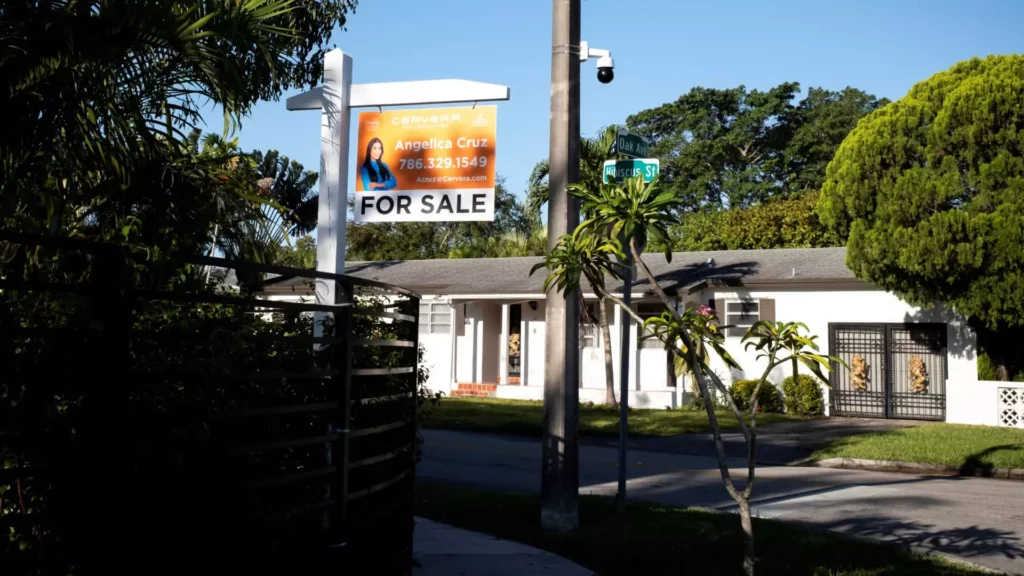March 2024 has been characterized by a stark downturn in the housing market, resonating dissonantly in the ears of prospective home buyers and sellers alike. A staggering 5.9% decrease in the sales of previously owned homes resulted in a mere 4.02 million units sold on a seasonally adjusted annual basis, making this the slowest rate for March since the tumultuous year of 2009. Such figures signal not just a seasonal dip but a glaring cry for help from our economic framework, casting a shadow over an already fragile recovery narrative. Homeownership, once viewed as a cornerstone of the American Dream, is increasingly slipping out of reach for the average household.
The sharp increase in mortgage rates, which hovered above 7% in January and February, played a critical role in blunting any momentum within the housing sector. Lawrence Yun, NAR’s chief economist, highlighted that the continued high rates are creating significant affordability challenges. With economic mobility dwindling, the real question emerges: what does this mean for the future of economic equity in America? There is an unsettling correlation as heightened mortgage costs exacerbate the divide between those who can afford to purchase real estate and those left navigating the unforgiving rental markets—a crucial aspect of housing accessibility that must be addressed.
The Regional Divide: A Tale of Two Markets
Examining the regional performance paints a more nuanced picture of the current housing landscape. The West experienced the most severe month-to-month decline, plummeting by over 9%. Yet, intriguingly enough, it stands alone in showcasing a year-over-year uptick, primarily driven by economic vigor in the Rocky Mountain states. The stark contrast across the regions raises eyebrows and illustrates a divided nation grappling with the consequences of a fluctuating economy. While some areas thrive amidst job growth, others suffocate under the weight of stagnant wages and rising living costs.
The inflexible nature of the current housing market is also evident in the mounting number of available listings, which surged by nearly 20% from March of the previous year to reach 1.33 million units. However, the implications are perplexing. More listings coupled with dwindling sales figures highlight a market teetering on the edge of crisis—facing a chill in prices while still struggling to attain equilibrium. What was once a seller’s paradise now appears more like a balancing act between buyers, sellers, and an unforgiving economic backdrop.
Home Prices: Inflation or Stagnation?
While the median price of existing homes reached a staggering all-time high of $403,700 in March, the 2.7% increase year-over-year indicates a troubling trend, with this being the smallest gain since last summer. In an age where inflation permeates all aspects of the economy, the housing market remains a paradoxical pocket where prices continue on an upward trajectory, albeit at a troublingly slow rate. The fiscal consequences extend beyond mere numbers; they influence real-life decisions for countless families navigating their financial futures.
It’s worth noting Yun’s observation regarding household wealth in residential real estate reaching a breathtaking valuation of $52 trillion. However, the question remains: who truly benefits from this uptick? By observing the increasing wealth amassed in home prices juxtaposed against the struggles faced by first-time homebuyers—whose representation plummeted to 32% this March compared to historical norms—there lies a glaring dichotomy that cannot be ignored. As equity expands, accessibility contracts, leading to a systemic issue that jeopardizes the foundational social fabric of our communities.
The Word on the Ground: Cancellations and Uncertainty
As we wade deeper into a troubled housing landscape punctuated by uncertainty, reports of rising canceled contracts paint a grim picture for the months to come. With the stock market behaving like an unpredictable tempest, it naturally imposes ripple effects on the housing sector. Robert Frick, a corporate economist with Navy Federal Credit Union, aptly mentions that while March’s numbers are already dire, they might soon signify an even bleaker outlook.
In a time when economic stability is a desperately sought-after commodity, it is crucial to reflect on the broader implications of a faltering housing market. The repercussions extend beyond the individual families affected—unresolved affordability issues may hinder not just the potential homeowners today, but also cripple the prospects of a flourishing economy tomorrow. As we seek solutions, the pathway must prioritize equitable access to housing and address the barriers that confine many to an unending cycle of financial struggle. The stakes have never been higher, and the urgency for reform is palpable in the present climate of uncertainty.




